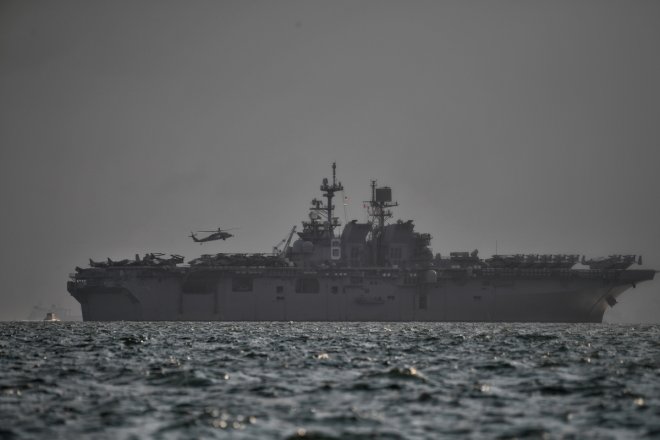
Pentagon fired two US Navy officers on Monday, September18 post collisions with civilian ships in the western Pacific which killed 17 sailors at sea. The administration criticized the Navy for "loss of confidence in their ability to command."
Rear Admiral Charles Williams, commander of the warships on patrol in the Asia-Pacific region, and Captain Jeffrey Bennett, commander of guided missile destroyers in the region, were removed based on the investigation conducted by the US Navy concerning incidents involving the USS John S. McCain and the USS Fitzgerald.
Defense Secretary James Mattis told reporters at the Pentagon, assuring everyone that the Navy's investigation involving these mishaps seem optimistic and is heading towards the right direction.
Four US warships crashed into the Pacific this year, thus perturbing situations and questioning America's stronghold. This move by the US therefore was essential.
The Navy has "a tradition of holding officers accountable, and they'll do what they think is necessary," Mattis stated.
Apart from the loss of life, Mattis also focused on the aviation crashes and other accidents during training sessions that have killed or injured more than 50 troops this year.
"We're going to look at what happened on the demolition range and we're going to look at what happened at seamanship on a ship and we're going to look at what happened when an aircraft came out of the air," he said.
On September 14, a US Army special operations service member was killed during a training exercise at Fort Bragg, North Carolina. According to reports, many were injured.
15 Marines were injured, again during a training exercise due to an unsuccessful landing where their amphibious landing vehicle blazed up at Camp Pendleton, Calif.
These unruly and inattentive mishaps led to the dismissal of several commanders including Vice Admiral Joseph P. Aucoin, commander of the Japan-based 7th Fleet, supervising operations in the Asia-Pacific region.
Chief of Naval Operations Admiral John Richardson, the Navy's top officer, ordered a close inspection to deduce reasons behind the recurrent collisions by trained crews on US warships carrying radars and hi-tech sensors.
This decision was undertaken after the US guided-missile destroyer John S. McCain collided with the Alnic MC, a Liberian-flagged oil and chemical tanker, nearly three times its size, on August 21. The accident took place at the entrance of the Strait of Malacca, one of Singapore's busiest shipping zones. Ten sailors lost their lives in the mishap.
Prior to this accident the guided-missile destroyer Fitzgerald was devastated by the Philippine-flagged container ship, the ACX Crystal about 50 nautical miles from the US Navy base in Yokosuka, Japan on June 17. Seven sailors fell prey to the accident. The commander and executive officer was later dismissed.
Two other such incidents, earlier this year includes those of the collision between the guided-missile cruiser Lake Champlain and a South Korean fishing vessel on May 9 and the other one involving the oil spill on Tokyo Bay by the guided-missile cruiser Antietam on January 31, after it ran aground.








